The 75th Ranger Regiment, also known as Rangers, or within JSOC as Task Force Red, is a light infantry, special operations unit of the United States Army. The regiment is headquartered at Fort Benning, Georgia and is composed of one special soldiers battalion and three ranger battalions. The regiment is the U.S. Army’s premier raid force, with specialized skills that enable them to perform a variety of missions. These include direct action, airfield seizure, airborne and air assaults, special reconnaissance, personnel recovery, and high-value target raids. It operates as a special operations force under the United States Army Special Operations Command.
History: Rangers lead the way
Ranger history predates the Revolutionary War. In the mid-1700’s, Capt. Benjamin Church and Maj. Robert Rogers both formed Ranger units to fight during the King Phillips War and the French and Indian War. Maj. Robert Rogers wrote the 19 standing orders that are still in use today.
The Continental Congress formed eight companies of expert riflemen in 1775 to fight in the Revolutionary War. In 1777, this force of hardy frontiersmen commanded by Dan Morgan was known as The Corps of Rangers. Francis Marion, “The Swamp Fox”, organized another famous Revolutionary War Ranger element known as Marion’s Partisans.
The Continental Congress formed eight companies of expert riflemen in 1775 to fight in the Revolutionary War. In 1777, this force of hardy frontiersmen commanded by Dan Morgan was known as The Corps of Rangers. Francis Marion, “The Swamp Fox”, organized another famous Revolutionary War Ranger element known as Marion’s Partisans.
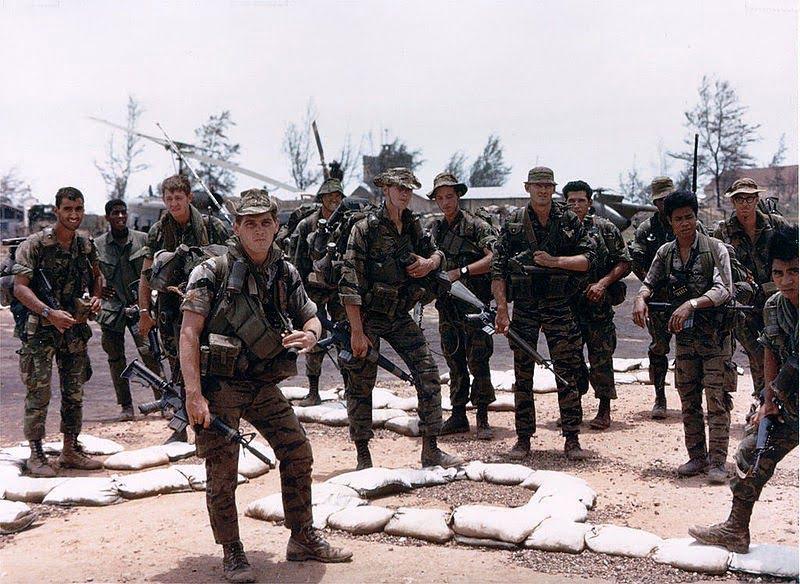
During the War of 1812, companies of United States Rangers were raised from among the frontier settlers as part of the regular army. Throughout the war, they patrolled the frontier from Ohio to Western Ill. on horseback and by boat. They participated in many skirmishes and battles with the British and their Indian allies. Many famous men belonged to Ranger units during the 18th and 19th centuries to include Daniel Boone and Abraham Lincoln.
The Civil War included Rangers such as John Singleton Mosby who was the most famous Confederate Ranger during the Civil War. His raids on Union camps and bases were so effective, part of North-Central Va. soon became known as Mosby’s Confederacy.
After the Civil War, more than half a century passed without military Ranger units in America. However, during World War II (1941-1945), the United States, using British Commando standards, activated six Ranger infantry battalions.
Maj. (later Brigadier General) William O. Darby organized and activated the 1st Ranger Battalion on June 19, 1942, at Carrickfergus, Northern Ireland. The 1st Ranger Battalion participated in the North African landing at Arzeu, Algeria, the Tunisian Battles, and the critical Battle of El Guettar.
The 3rd and 4th Ranger Battalions were activated and trained by Col. Darby in Africa near the end of the Tunisian Campaign. The 1st, 3rd, and 4th Battalions formed the Ranger Force. They began the tradition of wearing the scroll shoulder sleeve insignia, which has been officially adopted for today’s Ranger battalions.
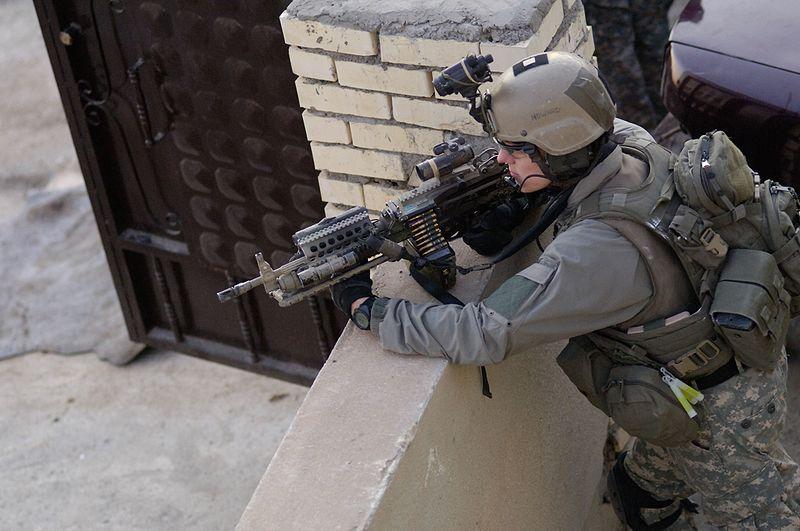
The 2nd and 5th Ranger Battalions participated in the June 6, 1944, D-Day landings at Omaha Beach, Normandy. It was during the bitter fighting along the beaches that the Rangers gained their motto, “Rangers, lead the way!” They conducted daring missions to include scaling the cliffs of Pointe Du Hoc, overlooking Omaha Beach, to destroy German gun emplacements trained on the beachhead.
The 6th Ranger Battalion operated in the Philippines and formed the rescue force that liberated American Prisoners Of War from a Japanese POW camp at Cabanatuan in Jan. 1945. The 6th Battalion destroyed the Japanese POW camp and evacuated more than 500 prisoners.
The 75th Infantry Regiment was first organized in the China-Burma-India Theater on Oct. 3, 1943, as Task Force Galahad. It was during the campaigns in the China-Burma-India Theater that the regiment became known as Merrill’s Marauders after its commander, Maj. Gen. Frank D. Merrill. The Ranger Battalions were deactivated at the close of WWII.
The outbreak of hostilities in Korea in June 1950 again signaled the need for Rangers. Fifteen Ranger Companies were formed during the Korean War. The Rangers went to battle throughout the winter of 1950 and the spring of 1951. They were nomadic warriors, attached first to one regiment and then to another. They performed “out front” work – scouting, patrolling, raids, ambushes, spearheading assaults, and as counterattack forces to regain lost positions.
Rangers were again called to serve their country during the Vietnam War. The 75th Infantry was reorganized once more on Jan. 1, 1969, as a parent regiment under the Combat Arms Regimental System. Fifteen separate Ranger companies were formed from this reorganization. Thirteen served proudly in Vietnam until inactivation on Aug. 15, 1972.
In Jan. 1974, Gen. Creighton Abrams, Army Chief of Staff, directed the formation of a Ranger battalion. The 1st Battalion (Ranger), 75th Infantry, was activated and parachuted into Fort Stewart, Ga. on July 1, 1974. The 2nd Battalion (Ranger), 75th Infantry followed with activation on Oct. 1, 1974. The 3rd Battalion, 75th Infantry (Ranger), and Headquarters and Headquarters Company, 75th Infantry (Ranger), received their colors on Oct. 3, 1984, at Fort Benning, Ga. The 75th Ranger Regiment was designated in Feb. 1986.
The modern Ranger battalions were first called upon in 1980. Elements of 1st Battalion, 75th Infantry (Ranger) participated in the Iranian hostage rescue attempts.
In Oct. 1983, 1st and 2nd (-) Ranger Battalions spearheaded Operation Urgent Fury by conducting a daring low-level parachute assault to seize Point Salines Airfield and rescue American citizens at True Blue Medical Campus.
The entire 75th Ranger Regiment participated in Operation Just Cause. Rangers spearheaded the action by conducting two important operations. Simultaneous parachute assaults were conducted onto Torrijos/Tocumen International Airport, Rio Hato Airfield and General Manuel Noriega’s beach house, to neutralize Panamanian Defense Forces. The Rangers captured 1,014 Enemy Prisoners of War (EPW) and over 18,000 arms of various types.
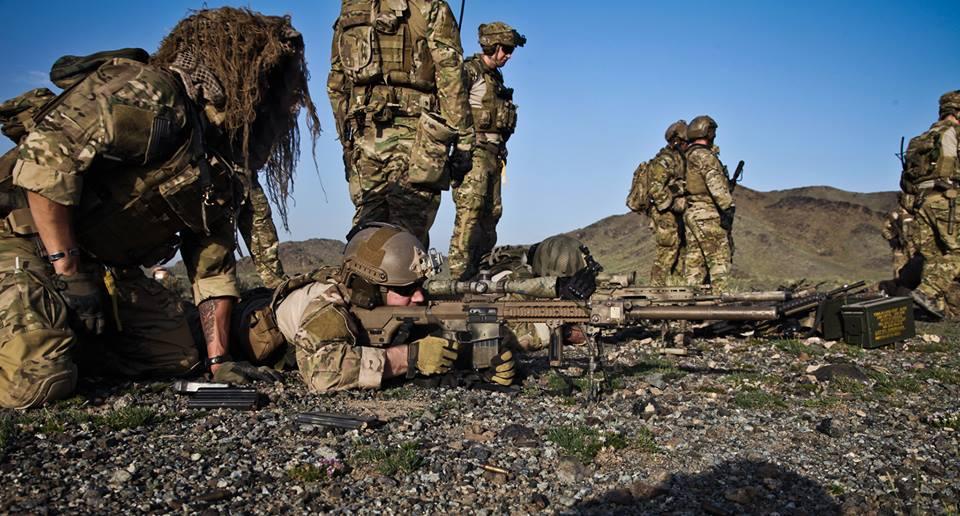
Elements of Company B, and 1st Platoon Company A, 1st Battalion, 75th Ranger Regiment deployed to Saudi Arabia from February 12, 1991, to April 15, 1991, in support of Operation Desert Storm.
In August 1993, elements of 3rd Battalion, and 75th Ranger Regiment, deployed to Somalia to assist United Nations forces in bringing order to a desperately chaotic and starving nation. On October 3, 1993, the Rangers conducted a daring daylight raid with 1st SFOD. For nearly 18 hours, the Rangers delivered devastating firepower, killing an estimated 600 Somalis in what many have called the fiercest ground combat since Vietnam.
On 24 November 2000, the 75th Ranger Regiment deployed Regimental Reconnaissance Detachment (RRD) Team 2 and a command and control element to Kosovo in support of TF Falcon.
After the events of September 11, 2001, Rangers were called upon to lead the way in the Global War on Terrorism. On 19 October 2001, 3rd Battalion and 75th Ranger Regiment spearheaded ground forces by conducting an airborne assault to seize Objective Rhino in Afganistan in support of Operation Enduring Freedom. On 28 March 2003, 3rd Battalion employed the first airborne assault in Iraq to seize Objective Serpent in support of Operation Iraqi Freedom.
Due to the changing nature of warfare and the need for an agile and sustainable Ranger Force, The Regimental Special Troops Battalion (RSTB) was activated 17 July 2006. The RSTB conducts sustainment, intelligence, reconnaissance and maintenance missions which were previously accomplished by small detachments assigned to the Regimental headquarters and then attached within each of the three Ranger battalions. The activation of the RSTB signifies a major waypoint in the transformation of the Ranger Force from a unit designed for short term “contingency missions” to continuous combat operations without loss in lethality or flexibility.
Today, Rangers from all four of its current Battalions continue to lead the way in the Global War on Terrorism. The 75th Ranger Regiment is conducting sustained combat operations in multiple countries deploying from multiple locations in the United States, a task that is unprecedented for the Regiment. Rangers continue conducting combat operations with almost every deployed special operation forces, conventional and coalition force in support of both Operation Enduring Freedom and Operation Iraqi Freedom. The Ranger Regiment is executing a wide range of diverse operations that include airborne and air assaults into Afghanistan and Iraq, mounted infiltrations behind enemy lines, complex urban raids and rescue operations.
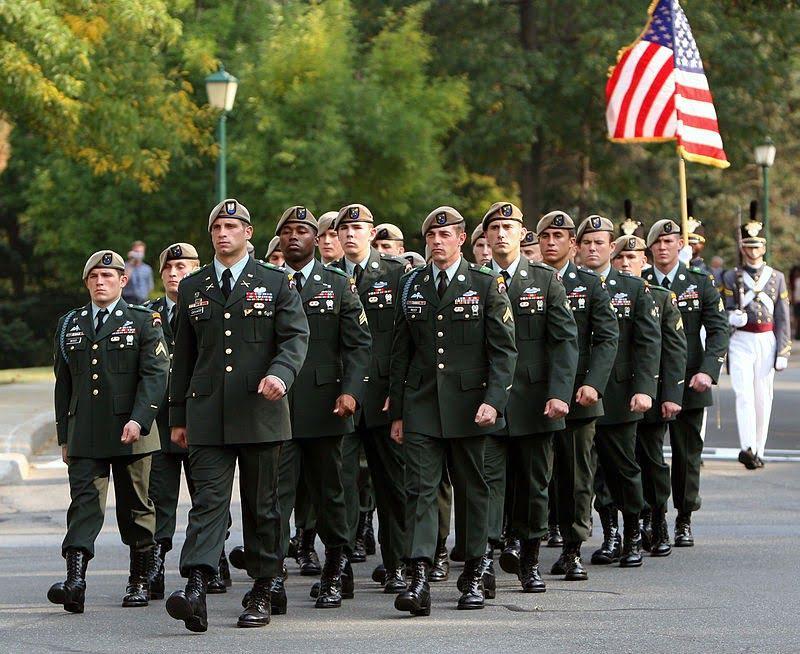
In addition to conducting missions in support of the Global War on Terrorism, the 75th Ranger Regiment continues to train in the United States and overseas to prepare for future no-notice worldwide combat deployments. The Regiment also continues to recruit, assess and train the next generation of Rangers and Ranger leadership.
Mission of lethal, highly trained and experienced force
Our national defense requires the 75th Ranger Regiment to execute any special operations or light infantry mission requiring a mature, competent, highly disciplined, and lethal force to ensure the precise application of combat power in politically sensitive environments. To achieve this, the Regiment must be extremely proficient in complex operations during both day and night, in all weather conditions and across all terrain. The Ranger Regiment is also the world’s premier light infantry fighting force, specializing in raids and assault missions deep inside enemy held territory. An expert in short-notice combat deployments, the Ranger Regiment is a rapidly deployable strike force and is the largest special operations combat element in the U.S. Army. The Regiment uses specialized equipment, operational techniques, and multiple modes of infiltration to capture or demolish hostile forces.
Being a ranger: discipline, intelligence, and determination
To be a part of the 75th Ranger Regiment requires personal excellence across numerous Soldier and leader attributes. Rangers are more than just physically powerful, Rangers are bright, tough, courageous, and disciplined. Rangers are self-starters, adventurers, and hard chargers. They internalize the mentality of a “more elite Soldier”, as the Ranger Creed states and as their intense mission requirements demand.
Rangers are role model Soldiers – mentally, morally, and physically – who use their minds as well as bodies to make sound judgments, reasoned decisions, and ultimately to never quit. Rangers demonstrate discipline both on and off duty, and their Regimental standards are enduring.
When then-Army Chief of Staff General Creighton Abrams envisioned the modern Ranger force, he emphasized the professional unit excellence stems from individual Ranger personal excellence and character. He directed that “wherever the battalion goes, it will be apparent that it is the best”. Members of the 75th Ranger Regiment live this charter both personally and professionally every day.
Rangers are role model Soldiers – mentally, morally, and physically – who use their minds as well as bodies to make sound judgments, reasoned decisions, and ultimately to never quit. Rangers demonstrate discipline both on and off duty, and their Regimental standards are enduring.
When then-Army Chief of Staff General Creighton Abrams envisioned the modern Ranger force, he emphasized the professional unit excellence stems from individual Ranger personal excellence and character. He directed that “wherever the battalion goes, it will be apparent that it is the best”. Members of the 75th Ranger Regiment live this charter both personally and professionally every day.
Training: further, faster and fight harder
As a member of the 75th Ranger Regiment, you will be trained to overcome the toughest challenges and gain the confidence and skills to overcome impossible odds. While the Ranger Regiment is composed of a multitude of Military Occupational Specialties, from its extraordinarily proficient light infantrymen to its world champion chefs, when you are accepted into the Regiment, you know you are surrounded by only the most professional, skilled, and hand-picked Soldiers the Army has to offer.
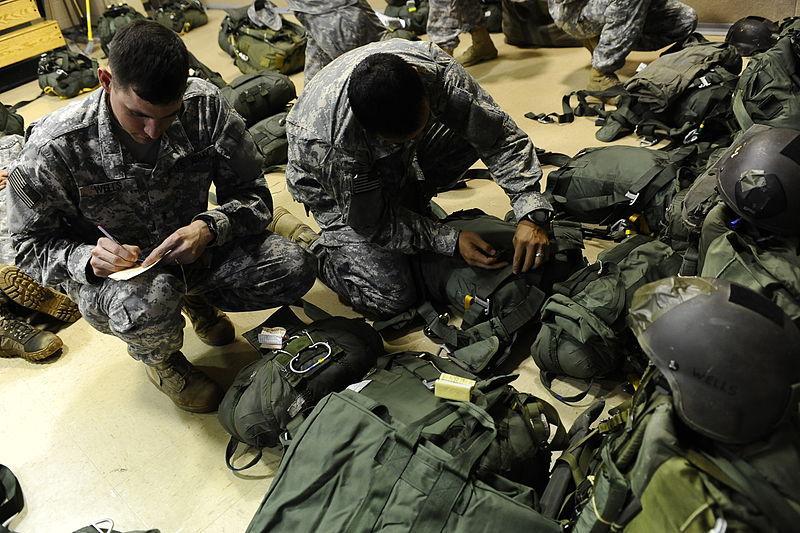
Regardless of your profession, the 75th Ranger Regiment trains all its members in the skills required to be an Army Ranger. Both Soldiers and officers undergo rigorous training prior to an assignment that ensures that every Ranger is mentally and physically tough enough to uphold the standards of the Regiment and, when finally arriving at their unit, can operate with minimal integration as part of a cohesive Ranger force.
RANGER ASSESSMENT & SELECTION PROGRAM
Every volunteer for the regiment, from every modern recruit to every officer and any senior leader selected to command in the regiment, will go through the Ranger Assessment and Selection Program to assess their ability and provide the basic skills required to be an effective member of the 75th Ranger Regiment.
For modern soldiers, RASP is conducted after applicants successfully complete their basic Military Occupational Specialty course and graduate from the Army’s Parachutists Course (Airborne School). For soldiers, both enlisted and officer, who have successfully completed their first tour of duty, and meet the recruiting qualifications, a RASP date will be scheduled upon application and conditional acceptance to the 75th Ranger Regiment.
Upon completion of RASP, regardless of when in your Army career you attend, you will have showed that you have what it takes to be a U.S. Army Ranger and will be assigned to the 75th Ranger Regiment.
RANGER FIRST RESPONDER (RFR)
This course is taught to all RASP students and continued upon assignment to ranger battalions. It teaches critical first aid and advanced combat lifesaver procedures. Regardless whether a Ranger is a medical professional or not, this advanced medical course gives every ranger the skills necessary to treat and save lives. Continuing to set the example, this course has become the basis for all Combat Lifesaver Courses taught Army-wide.
RANGER LANGUAGE PROGRAM (RLP)
This course provides Rangers knowledge of local languages and dialects useful when conducting ranger operations in foreign environments. Rangers completing this course will have a basic knowledge of dialects useful in areas where the regiment is currently operating. Students that excel are provided the opportunity while in the regiment to attend additional language training in full-time Army language programs across the United States.
U.S. ARMY RANGER SCHOOL
An Army service school, this course teaches the fundamentals of small unit leadership and patrolling. Ranger School is the most physically and mentally demanding leadership school the Army has to offer. Not necessarily a qualifier to apply or be assigned to the 75th Ranger Regiment, members of the regiment desiring to be placed in higher positions of responsibility are afforded the opportunity to attend and earn the coveted U.S. Army Ranger Tab – a mark of distinction in the military and civilian community and proof positive of proven leadership under the toughest conditions possible.
ARMY AND JOINT SERVICE SCHOOLS
Depending on occupation and job requirements, members of the 75th Ranger Regiment enjoy unparalleled access to countless military schools, including Jumpmaster, Sniper, Pathfinder, Military Freefall, Scuba, Survival-Evasion-Hardness-Escape (SERE), and others. Additionally, members of the regiment at all levels are afforded unrivaled opportunities for joint training and non-traditional military and civilian schooling.
No comments:
Post a Comment